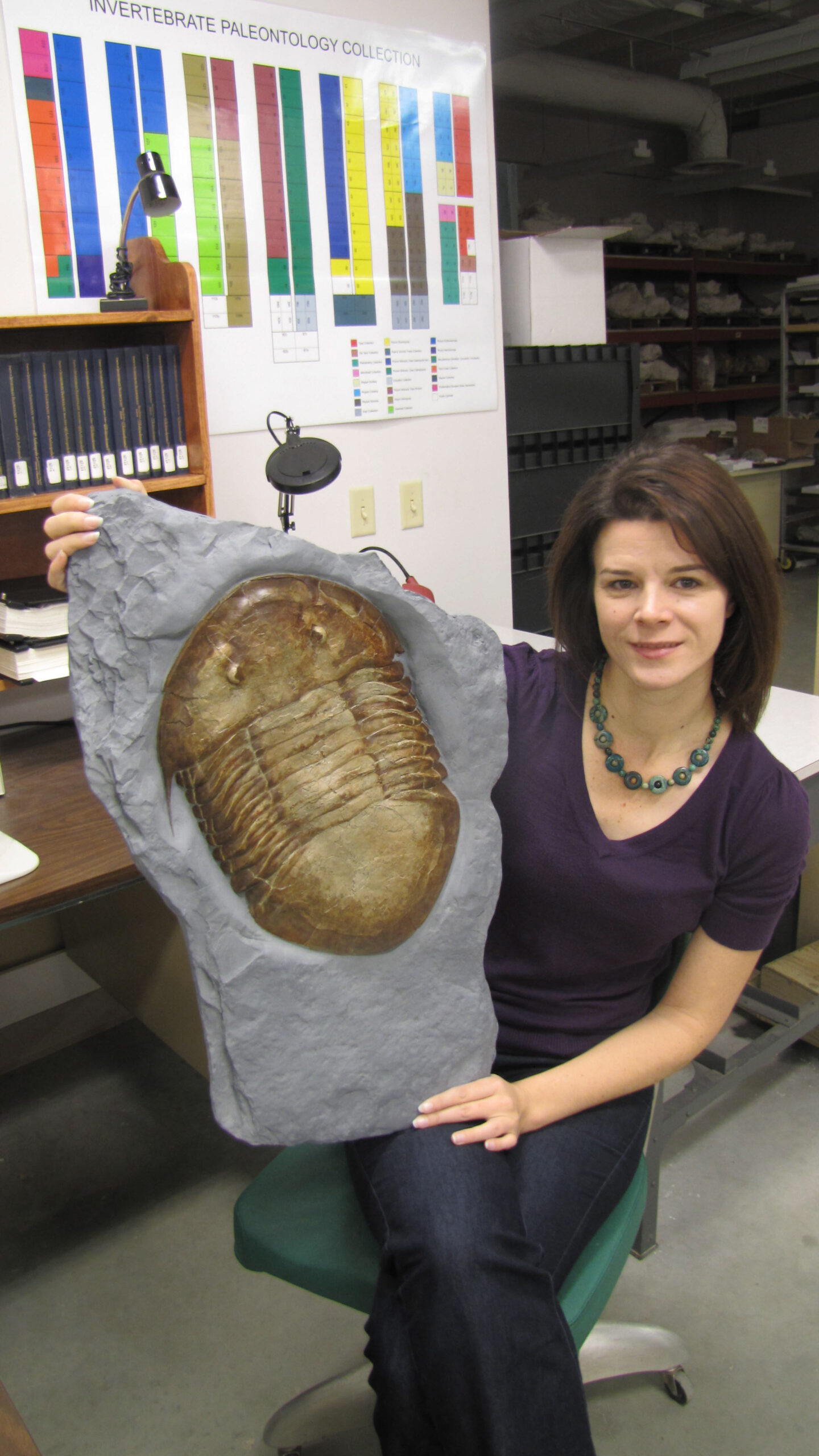Extinction is nothing new to Planet Earth. At 4.5 billion years old, the planet has endured many periods of extinctions. There have however been a number of massive extinctions, when an overwhelming, almost unbelievable number of species were forever wiped off the face of the Earth.
They are considered mass extinctions and there have been five of them during Earth’s history.
“The causes are still being intensely studied,” said paleontologist Dr. Brenda Hunda of the Cincinnati Museum Center. “Changes in climate, sea levels, sea chemistry, extensive volcanism, meteorites, and glaciations have all caused massive extinctions.”

“Extinction is a natural event,” continued Dr. Hunda. “Extinction and evolution go hand in hand. Extinction leaves open ecological space, creating a niche and is good in many ways. Species have to go extinct for other species to evolve.”
And if you think Homo sapiens will rule the planet forever, think again.
“Ninety-nine-point nine percent of all life that has ever lived on the planet eventually goes extinct,” said Dr. Hunda. “Most mammals go extinct after, on average, about one million years, although they can last up to 10 million years. Humans have large brains and can manipulate the environment. They may last longer than many other mammals, but yes, at some point the human species as we know it will go extinct.”
A brief description of Earth’s mass extinctions. . .
The Ordovician Mass Extinction occurred approximately 439 million years ago. According to Dr. Richard Cowen of the University of California-Davis, this extinction occurred in two pulses. The first happened as a big ice age began and glaciers formed causing sea levels to drop. The second pulse occurred as the ice age ended and glaciers melted causing sea levels to rise. Twenty-five percent of marine families were lost to this extinction event. The fossils we so commonly see in the Cincinnati area today are from the Ordovician period.
The Late Devonian Mass Extinction took place about 364 million years ago. Per Dr. Cowen this was a major worldwide extinction of coral reefs and their associated plants and animals. Evidence suggests an asteroid impact, or even a series of impacts on a planet that was already stressed by climatic and sea level changes. The death toll was 22% of marine families. Fish were the dominant species at this time.
The End-Permian Extinction was about 251 million years ago and is sometimes called the Great Dying. This was the earth’s most extensive mass extinction where 95% of all marine species and 70% of land species (plants, insects and vertebrate animals) became extinct. Dr. Cowen states that the evidence is conclusive that the cause of this mass extinction was an asteroid strike on the Earth’s surface along with the largest known volcanic eruption in Earth’s history. A brief period of cooling was followed by a long period of intense global warming, a period of a thousand years or more, due to water vapor and carbon dioxide buildup in the atmosphere.
The End-Triassic Extinction was roughly 200 million years ago. Volcanism in what is now the Atlantic Ocean likely led to deadly global warming. About 22% of marine families became extinct. Dinosaurs and other vertebrates were also possibly impacted.
The Cretaceous-Tertiary Extinction was relatively recent, about 65 million years ago. This mass extinction was caused by the impact of a large asteroid on the Yucatan Peninsula and beneath the Gulf of Mexico. As with other asteroid strikes, global warming led to the extinction of numerous species of animals, including the dinosaurs.
According to famed Harvard biologist Dr. E. O. Wilson, after each of these mass extinctions it took more than 10 million years for evolution to replace the biodiversity lost.
Global warming, politics aside
Interestingly, global warming is associated with four of the five mass extinctions on the planet.
Politics aside, the question begs to be answered – are we in the midst of the Earth’s sixth mass extinction? Also known as Anthropogenic Extinction, this extinction is not caused by natural events but by human causes.
Dr. Hunda believes so. “The first wave of the sixth mass extinction started 100,000 years ago when humans started migrating out of Africa,” said Dr. Hunda. “Humans were competing with large animals causing huge mega-fauna disappearance.”
“The second wave started about 10,000 years ago when humans came across agriculture,” continued Dr. Hunda. “With agriculture, humans no longer had to move around to get food. They could stay put and build large communities. Agriculture destroys species and ecosystems. When monocultures are planted, diversity is lost. Humans no longer had to live as a part of nature. Instead, they controlled nature. Humans could take species and use them for their own purposes and do so on a greater scale than any other species.”
Per Dr. Hunda, what makes this extinction different is that it is biological in nature, while previous extinctions were physical.
“This extinction is human mediated,” said Dr. Hunda. “One species is causing the extinction of others. Humans are a great biological agent for extinction.”
“We are living in a time when we can do damage to the Earth like never before seen,” said Dr. Hunda. “We are losing species at an extraordinary rate and if it continues it could be at a level that would rival the five major mass extinction events. It is not typical for a single species to wipe out tens of thousands of other species. Species will go extinct before we can document them.”
Harvard’s Dr. Wilson estimates that we are losing 30,000 species per year, that is three species an hour. Rain forests are thought to harbor more than half of the world’s biodiversity and are disappearing at roughly 2% annually, a yearly loss equal to the state of Florida. Dr. Wilson estimates that for every 90% of habitat destroyed, 50% of its species disappear – often forever. One species that is not disappearing though is Homo sapiens. In the past 50 years humans have doubled their population. Human population is expected to again double in the next 50 years.
Few scientists would argue the fact that climate change is greatly accelerating extinctions. As the planet warms species either adapt, or migrate, like moving north or to higher elevations. That does not bode well for the likes of polar bears, emperor penguins, pandas and the many cold-dependant species that live on mountaintops with nowhere else to go. More than a third of the world’s amphibian species are threatened with extinction. “Disease is the bullet that’s killing the frogs,” said one scientist. “But climate change is pulling the trigger.”
Dr. Hunda, a paleontologist who studies prehistoric life, has a different take. “Don’t worry about the planet, it will be just fine,” said Dr. Hunda. “It’s us that won’t be okay.”
Gayle Pille is a local naturalist and nature writer who many know through her work to establish the five-mile network of nature trails at Highland Cemetery in Ft. Mitchell. She created the cemetery’s popular 25-year-old Wildlife Enhancement Program and works with a small team of volunteers to maintain the cemetery’s wooded walking paths. An avid birdwatcher, Gayle also builds custom wildlife nest boxes for businesses, parks and residences through her business, www.woodlandhabitat.com






















